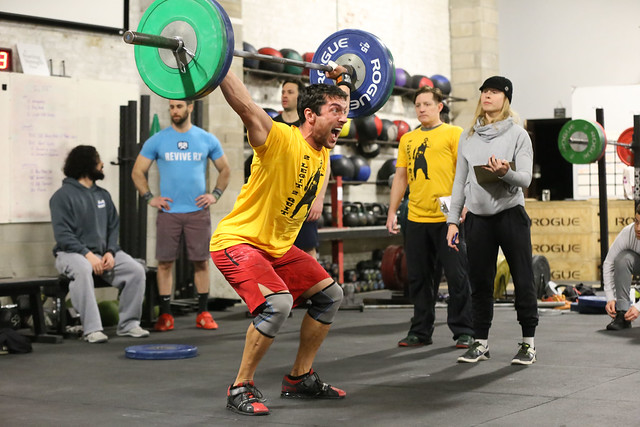Stress, Cortisol, and Body Composition
By Chris Fox
Editor’s Note: The following is an adapted version of Coach Fox’s recap notes from this year’s 2nd Look, Feel, Perform Better Challenge Lecture. We liked it so much that we’re posting it here for everyone to read. Enjoy!
What is stress?
Stress, as we’re discussing it, is a normal physiological response to danger, or something else that upsets your equilibrium. Your body’s response to it is to kick in the “fight or flight” response as it’s way of protecting you, and there is a wave of hormonal action associated with this response. This could be brought on by a challenging workout, almost getting hit by a bus, fighting with your boss, getting cut off in traffic, or worrying too much about things you can’t control.
What is cortisol?
Cortisol is a hormone released by the adrenal cortex, and it is a main “fight or flight” hormone. It’s often called a “stress hormone” because it’s released under times of stress. One of it’s main jobs is to facilitate something called gluconeogenesis, the breaking down of muscle tissue to create glucose for energy.
Is cortisol good or bad?
Both, really… but it’s not that simple. When released naturally in response to acute stress, it does the job it supposed to do and helps provide your body with the energy necessary to escape danger, and it’s pro-inflammatory action aids the healing of damaged tissues. In normal life, as humans evolved, these types of stresses would come on fast but also pass just as fast, allowing hormone levels to normalize. Nowadays however, it’s common for people to move from stress to stress, and spend too much time in “fight or flight”, thus maintaining elevated levels of cortisol. Chronic elevated levels of cortisol are associated with: decreases in lean muscle mass, increases in body fat, decreased auto immune response, among other things.
How can I manage stress?
Certain stresses can result in a net positive once the stress is dealt with and you return to homeostasis (a workout, learning a new skill, public speaking, etc.). Others acute stresses can be harmful (being eaten by a tiger), and chronic stress is particularly bad if we don’t turn off the stress response. We’ve all heard that things like yoga, meditation, and relaxation techniques help reduce stress, but you don’t have to become a yogi or a monk to work on chilling out. Here is a link from the good folks over at Precision Nutrition with more info on stress and strategies to manage your load.
You’ll notice that things like listening to music or petting your (or someone else’s) dog can also help! In short, although some stress is good, we need to be able to turn it off. Chronic elevated stress levels will hinder not only sport performance and body composition, but can have negative long term health effects as well. Experiment with some stuff to find your personal favorite way to relax.
This Sunday: LFPB Challenge Lecture and Q&A
The next Look, Feel, Perform Better Challenge Lecture and Q&A is this Sunday, February 4th at 12pm in the Annex. In this 3rd lecture of the 2018 Challenge, we’ll discuss “trigger” foods. We’ve all got foods that we like that are also healthy for us, foods that are less than healthy that we can’t resist, and foods that fall in the middle. We’ll use the “Red Light, Yellow Light, Green Light” system to help identify which foods are which, and discuss what to do with that information.
_____________________
Yesterday’s Results Board: Rest Day
Pushing the Limits of Extreme Breath Holding New Yorker
The Workout That Saves Lindsey Vonn from Wiping Out NY Times






Front Squat
Work up to a medium-heavy Front Squat from the floor via a Power Clean.
Post loads to comments.
_____________________
For Time:
15-12-9
Front Squats 135/95
Handstand Push-Ups
The Front Squats should be light-medium and unbroken on the fast end. Scale ROM (2 AbMats max) on the Handstand Push-Ups or to Box Piked as needed.
Post time and Rx to comments.
“I don’t want to sell memberships. I want to be a coach, and I want to have community.” That’s our very own Captain Osorio making us proud once again in “A New York Decade,” CrossFit Journal‘s in-depth interview on his 10-plus years of running CFSBK. There’s so much good stuff here that it’s impossible to distill it down to a few sentences. Just read it!